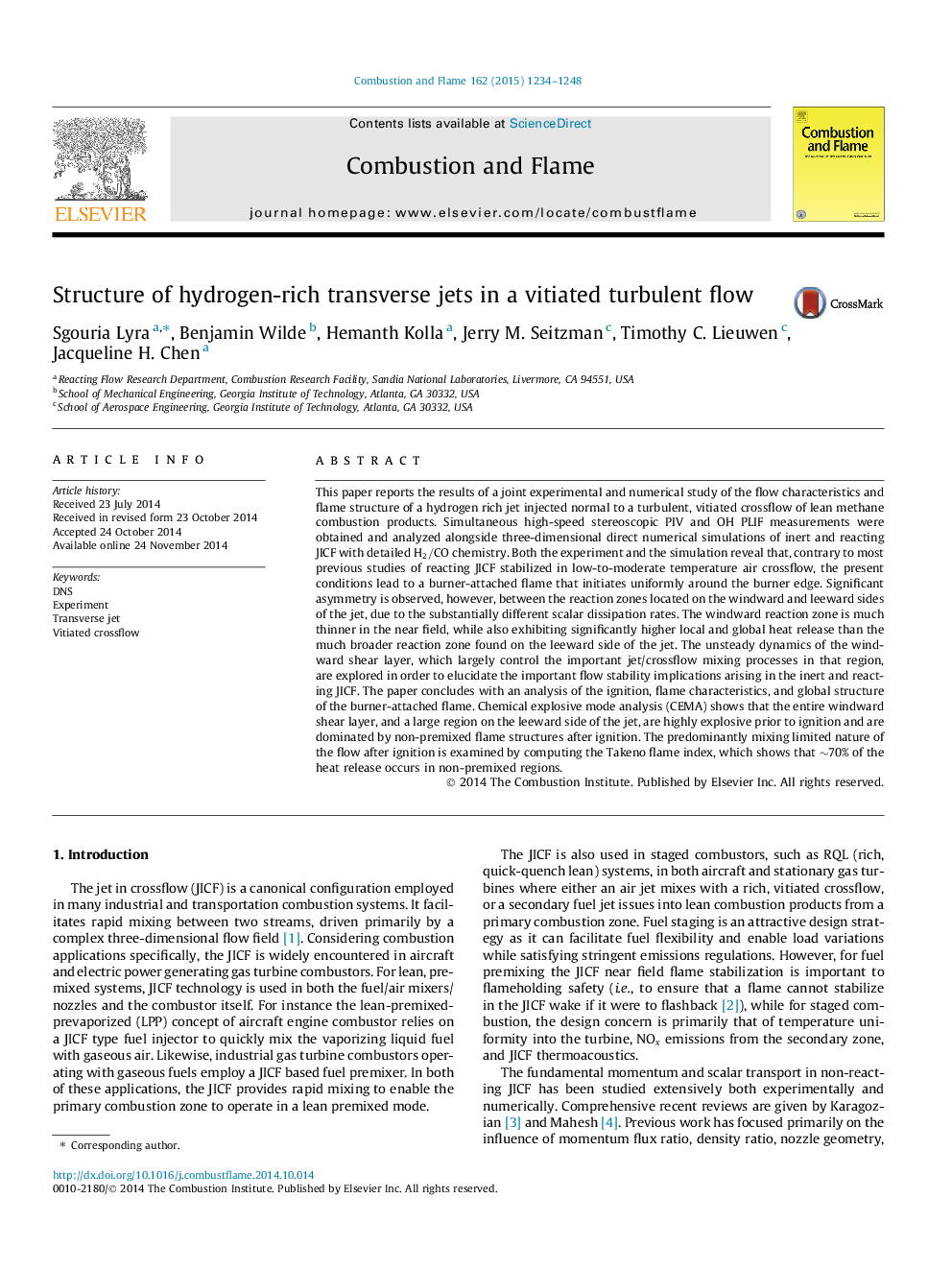| کد مقاله | کد نشریه | سال انتشار | مقاله انگلیسی | نسخه تمام متن |
|---|---|---|---|---|
| 168753 | 457952 | 2015 | 15 صفحه PDF | دانلود رایگان |
This paper reports the results of a joint experimental and numerical study of the flow characteristics and flame structure of a hydrogen rich jet injected normal to a turbulent, vitiated crossflow of lean methane combustion products. Simultaneous high-speed stereoscopic PIV and OH PLIF measurements were obtained and analyzed alongside three-dimensional direct numerical simulations of inert and reacting JICF with detailed H2/COH2/CO chemistry. Both the experiment and the simulation reveal that, contrary to most previous studies of reacting JICF stabilized in low-to-moderate temperature air crossflow, the present conditions lead to a burner-attached flame that initiates uniformly around the burner edge. Significant asymmetry is observed, however, between the reaction zones located on the windward and leeward sides of the jet, due to the substantially different scalar dissipation rates. The windward reaction zone is much thinner in the near field, while also exhibiting significantly higher local and global heat release than the much broader reaction zone found on the leeward side of the jet. The unsteady dynamics of the windward shear layer, which largely control the important jet/crossflow mixing processes in that region, are explored in order to elucidate the important flow stability implications arising in the inert and reacting JICF. The paper concludes with an analysis of the ignition, flame characteristics, and global structure of the burner-attached flame. Chemical explosive mode analysis (CEMA) shows that the entire windward shear layer, and a large region on the leeward side of the jet, are highly explosive prior to ignition and are dominated by non-premixed flame structures after ignition. The predominantly mixing limited nature of the flow after ignition is examined by computing the Takeno flame index, which shows that ∼70% of the heat release occurs in non-premixed regions.
Journal: Combustion and Flame - Volume 162, Issue 4, April 2015, Pages 1234–1248
